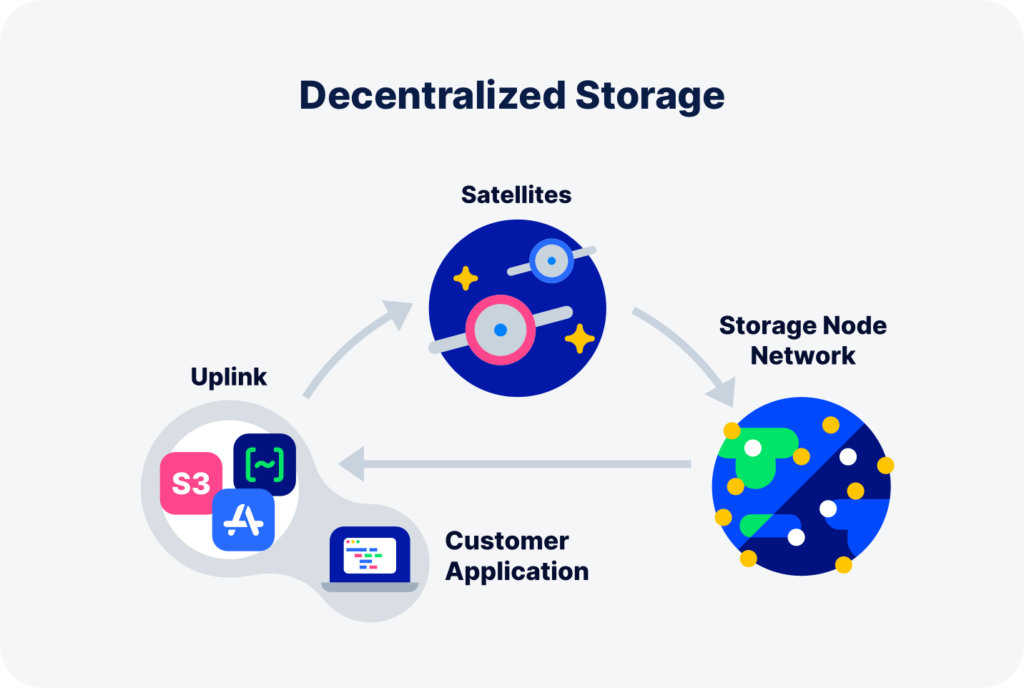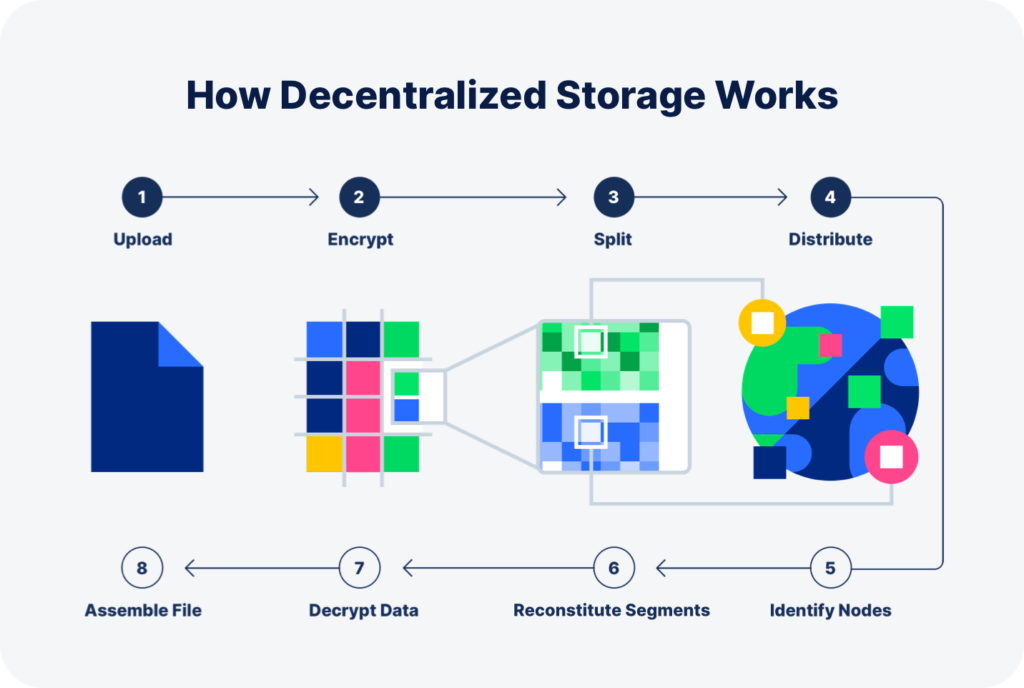Storj a data storage platform that leverages a decentralized blockchain network to provide cloud storage solutions

Cloud storage has now become an indispensable asset in a world that has progressively moved online and placed a larger emphasis on “big data.” Previously, if a person or corporation wanted to host more data for their website or business, they had to purchase additional hardware to hold that data.
However, from the mid-2000s, there has been a shift toward adopting third-party services such as Amazon Web Services (AWS) and Microsoft Azure to replace do-it-yourself data storage. These services, which are used by some of the world’s top corporations, charge consumers to store their data on servers all over the world. Netflix and Reddit are among the companies that use AWS’s Simple Storage Service (S3).
Storj is one of many blockchain-based platforms attempting to provide similar services on a decentralized network. It provides data storage to users in the same manner as S3 or Azure do, but it also emphasizes the security benefits of multilayered encryption and breaking files into parts spread throughout its network. It also tries to make these services more affordable. Storj, in essence, allows users to rent hard drive space from a network of other entities (called nodes) that are lending it.
Storj launched the STORJ token to align the economic interests of end-users and network nodes. STORJ is an Ethereum-based currency used by storage renters to make payments to storage providers since Storj payments are processed on the Ethereum network.
Storj contributes to the decentralized data storage movement along with other crypto-based initiatives such as Filecoin and Sia, albeit having a distinct architecture.

How Was Storj developed ?
Storj was conceptualized in 2014 by computer scientist Shawn Wilkinson and entrepreneur John Quinn. The two published a whitepaper detailing their peer-to-peer cloud storage network in December that year. Wilkinson still serves on Storj’s board but in 2022 moved on to found and become CEO of a company focused on generative artificial intelligence (http://Storj)
As Storj was designed and created before the advent of Ethereum, its original “appcoin” (SJCX) was released on CounterParty, a Bitcoin-based platform that allowed for the creation of unique (non-BTC) tokens. Ultimately, the Storj team decided to transition all SJCX to Ethereum as ERC-20 tokens (STORJ) in a 1:1 exchange for holders.
Around the same time SJCX holders converted their tokens to STORJ, the team also held a token sale that released over 70 million tokens to the public. Through exchange of BTC and ETH, the team raised its goal $30 million in only one week.
The platform is still directed by Storj Labs. The company is led by CEO Ben Golub, who is an entrepreneur and serial startup executive who has served in that role since 2018.
How does STORJ work ?

Storj’s architecture is designed so that data to be stored, retrieved, maintained (regenerated if there is a failure in storage), and paid for using cryptocurrency. In order to be useful in the broader technological landscape, the platform prioritizes compatibility with Amazon’s S3 data storage solution.
When a user (customer) submits data to the network using their uplink, it is split into many smaller pieces and encrypted. This ensures both security and privacy, as no single actor can access all of a user’s information except the user. When data is requested from the network, this process is reversed: it is put back together from the smaller pieces prior to being delivered. Users pay for storage and retrieval of their data with STORJ.
Storage nodes are computers run by network participants (individuals or other entities) who store and return the piecemeal data to end-users. They are chosen based on how well they are able to provide data services, and they are paid for their services in the form of STORJ. If a storage node goes offline, there are redundancies that backstop user data and can still return it intact. Nodes are audited by the system to determine their stability, and if they fail the audit then this affects their ability to remain active.
A third type of actor on the network, called a satellite, acts as a mediator between users and storage nodes. Users can run their own satellites to navigate choosing nodes, manage payments, and perform other maintenance tasks. However, this service can also be provided by third parties—including Storj Labs itself.
How is the STORJ token used ?
STORJ is a token native to the Ethereum blockchain that conforms to the ERC-20 token standard. Users who wish to store data on the network pay a fee with STORJ tokens. According to the development team, the goal of the platform is to pass along approximately 60% of the revenue to storage nodes. Therefore, nodes providing data storage services can collect their cut of the fees in the form of STORJ, as well. Between 2017 and 2021, almost $3.5 million worth of STORJ was paid out to node operators

Token distribution
The initial total supply of STORJ was 500 million tokens. However, around 75 million tokens were removed from the supply (“burned”) by the development team, leaving approximately 425 million STORJ available.
Storj Labs has controlled the release of new tokens from their reserves into the circulating supply, at least partially restricted by time-locked smart contracts. The company publishes a quarterly report detailing token unlocks, the release of STORJ into circulation, and how they use their reserves for business operations. At the end of March 2023, Storj held 135.5 million STORJ tokens in their non-circulating supply.

Conclusion
- Storj is a decentralized data storage platform that uses a network of computers to store and retrieve encrypted pieces of information for its users.
- While Storj was initially built on technology that used Bitcoin’s blockchain, it made the transition to Ethereum and converted its token (STORJ) to an ERC-20 token.
- Users submit their data to Storj’s network where it is stored by nodes, and this transaction is governed by an exchange of STORJ tokens as payment. Some of the logistical aspects of this user-node relationship are mediated by other network actors called satellites.
Reference by Storj.com & bitstamp.net

Leave a Reply